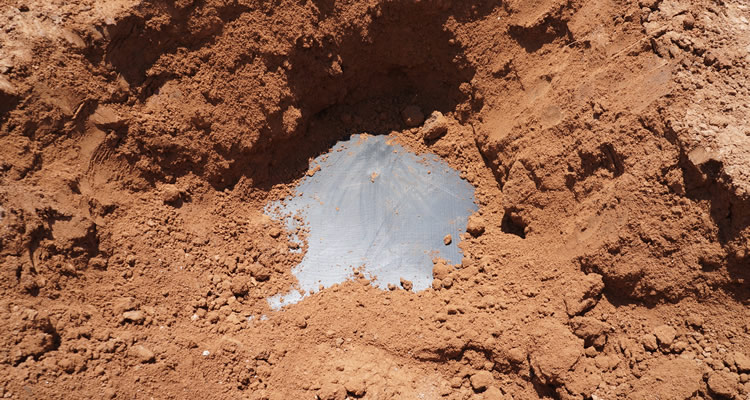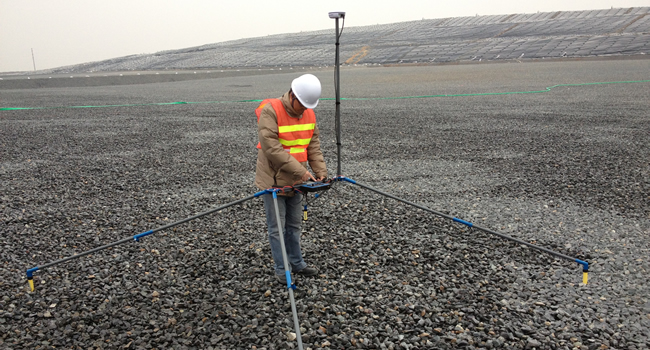Geosynthetica has reached a major milestone: its 20th anniversary of delivering geosynthetics stories! In internet years, that’s a long, long time. The publication was founded by Dr. Ian D. Peggs, who sold the business in 2010 and retired from his formal consultancy (I-CORP International) in early 2020. While Dr. Peggs was not involved in the daily operations of Geosynthetica during his time as owner, he was certainly contributed the most consistently provocative geosynthetics articles.
One tech note that stands out from the archives opened with a question on when to perform a liner integrity survey. Dr. Peggs’s answer had a bit of cheek in it, but it also raised an extremely sound point for debate. He wrote:
It depends who you are – the installer or the owner!
WHEN TO PERFORM A LINER INTEGRITY SURVEY – TWO ANSWERS
“The installer of a decorative pond liner asked when the liner integrity survey should best be performed,” Peggs wrote. “Before or after placing the cover soil?”
Project specifications required a survey to be done by the installer but did not state when. The installer was not responsible for placing cover soil, but what was known on the project was that the earth mover did not have previous experience with working on top of a geomembrane.
Poor installation practices or subgrade preparation and clumsy earth-moving equipment work damage geosynthetics before a facility even goes into use. This is where a geoelectrical liner survey comes in: to verify the integrity of site or identify holes, rips, seam damage, or outright gouges that need to be repaired.
RELATED: Geosynthetica Founder Ian Peggs Retires from I-CORP
In the case that spurred Dr. Peggs’s column, it was clearly a situation in which the installer would prefer a survey before cover soil is placed, because the experience installer felt confident in the work but not confident in what a survey would reveal if it was performed after the earthmoving crew had potentially damaged the installation. The installer would want recognition for work well done rather than a suggestion of liability in the work if a post-cover soil placement liner integrity survey revealed damage. It might become quite an argument about when damage took place.
The owner, meanwhile, would certainly benefit from a survey AFTER cover soil placement to catch all leaks in the liner.

“Statistics show that 74% of the leaks in a liner are made during placement of the cover soil,” Dr. Peggs wrote in 2008. That was consistent for what was being found in the late 1990s and early 2000s from multiple providers of liner survey services and installation CQA professionals.
So how did the project turn out?
Four small leaks were found when the liner integrity survey was performed—BEFORE cover soil placement.
“We were passing the site about a week later so dropped in to see how it looked,” Peggs wrote. “Cover soil had been placed and the upper slopes sodded. It looked neat and tidy. However, when we walked on the soil, we noticed many large (3 in.) pieces of broken glass in it!”
Were there holes in the geomembrane lining system now? If so, where did the liability rest?
The installer did the required survey and covered his own work.
“The owner probably did not get what he wanted,” Peggs wrote, “because he or his engineer did not specify the survey to be done after cover soil had been placed.”
A THIRD ANSWER
So, one major stakeholder (the installer) is in a better position with a survey performed before any cover is place. Another stakeholder (the owner) is in a better position with a survey performed after placement of cover.
Featured Liner Survey Provider: TRI Environmental
The question at hand was “When should I perform a liner integrity survey?” The answer, Dr. Peggs noted, depended on whether you were the installer or owner. Yet, Peggs also hit upon a third answer in the close of his column—without, perhaps, realizing it.
If you are the liner integrity survey provider, you’d argue that a survey is best performed before and after cover placement.
We close with Dr. Peggs’s original, closing advice:
“In critical situations there is much to be said for performing surveys both before and after cover soil placement – delineate responsibility for damage and make some repairs without excavating that might cause additional damage.”












